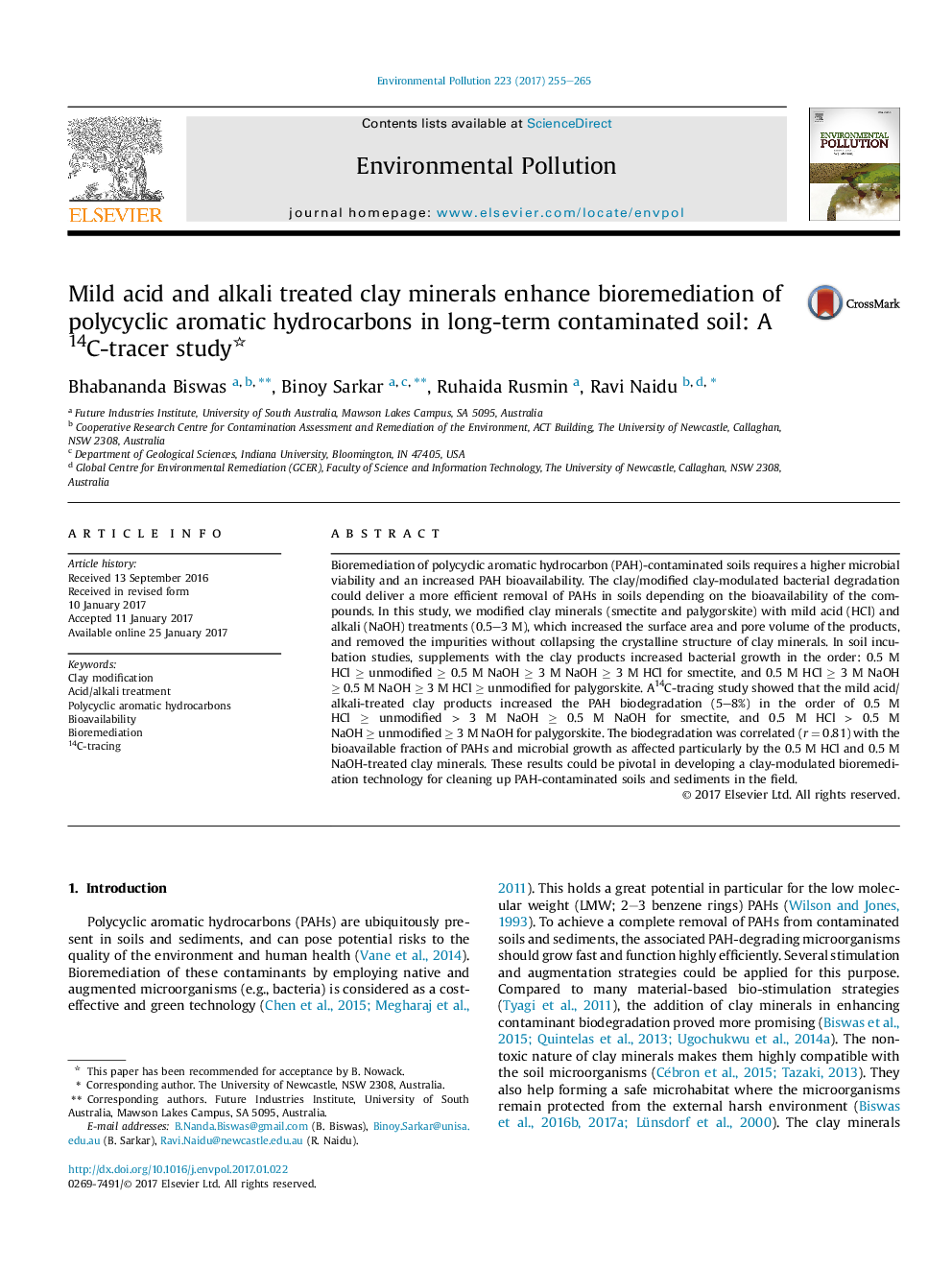| کد مقاله | کد نشریه | سال انتشار | مقاله انگلیسی | نسخه تمام متن |
|---|---|---|---|---|
| 5749305 | 1619150 | 2017 | 11 صفحه PDF | دانلود رایگان |

- Mineralization of PAHs in clay-amended soils studied.
- Acid/alkali treatment altered physicochemical properties of clay minerals.
- Soil bacterial growth increased due to mildly treated clay amendments.
- Clay amendments improved soil PAH bioavailability.
- Biodegradation of low molecular weight PAHs also increased.
Bioremediation of polycyclic aromatic hydrocarbon (PAH)-contaminated soils requires a higher microbial viability and an increased PAH bioavailability. The clay/modified clay-modulated bacterial degradation could deliver a more efficient removal of PAHs in soils depending on the bioavailability of the compounds. In this study, we modified clay minerals (smectite and palygorskite) with mild acid (HCl) and alkali (NaOH) treatments (0.5-3 M), which increased the surface area and pore volume of the products, and removed the impurities without collapsing the crystalline structure of clay minerals. In soil incubation studies, supplements with the clay products increased bacterial growth in the order: 0.5 M HCl â¥Â unmodified â¥Â 0.5 M NaOH â¥Â 3 M NaOH â¥Â 3 M HCl for smectite, and 0.5 M HCl â¥Â 3 M NaOH â¥Â 0.5 M NaOH â¥Â 3 M HCl â¥Â unmodified for palygorskite. A14C-tracing study showed that the mild acid/alkali-treated clay products increased the PAH biodegradation (5-8%) in the order of 0.5 M HCl â¥Â unmodified > 3 M NaOH â¥Â 0.5 M NaOH for smectite, and 0.5 M HCl > 0.5 M NaOH â¥Â unmodified â¥Â 3 M NaOH for palygorskite. The biodegradation was correlated (r = 0.81) with the bioavailable fraction of PAHs and microbial growth as affected particularly by the 0.5 M HCl and 0.5 M NaOH-treated clay minerals. These results could be pivotal in developing a clay-modulated bioremediation technology for cleaning up PAH-contaminated soils and sediments in the field.
226
Journal: Environmental Pollution - Volume 223, April 2017, Pages 255-265